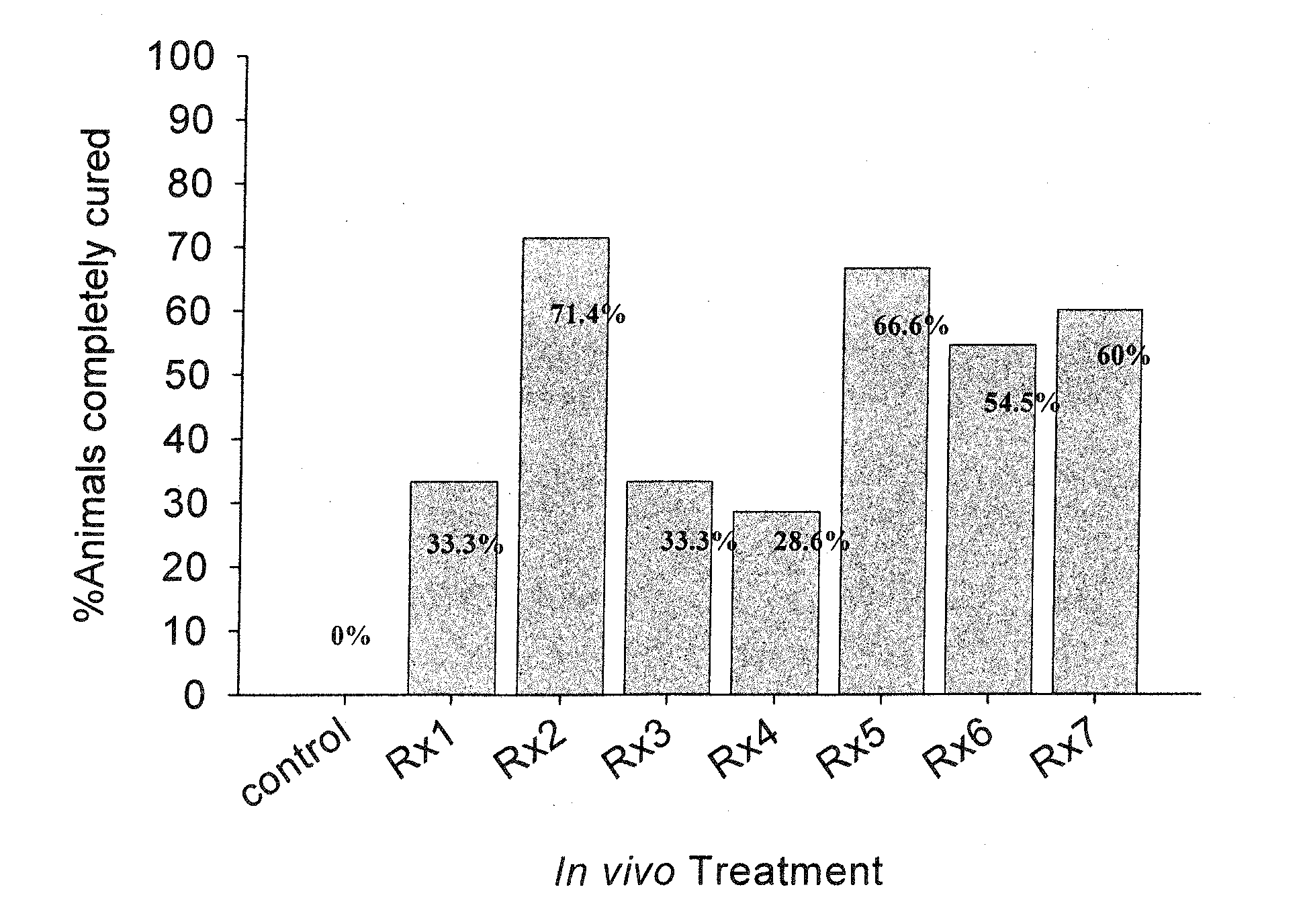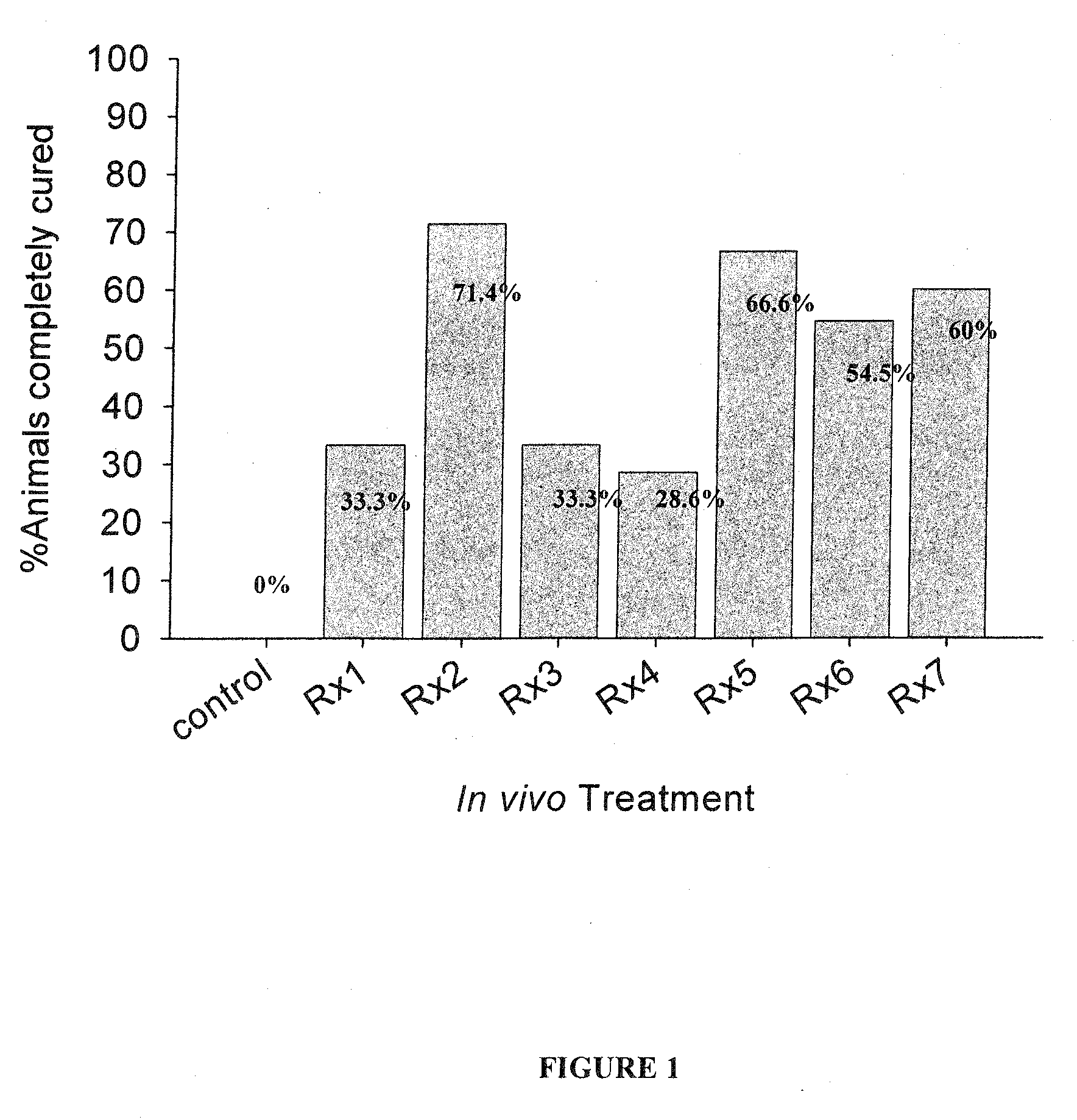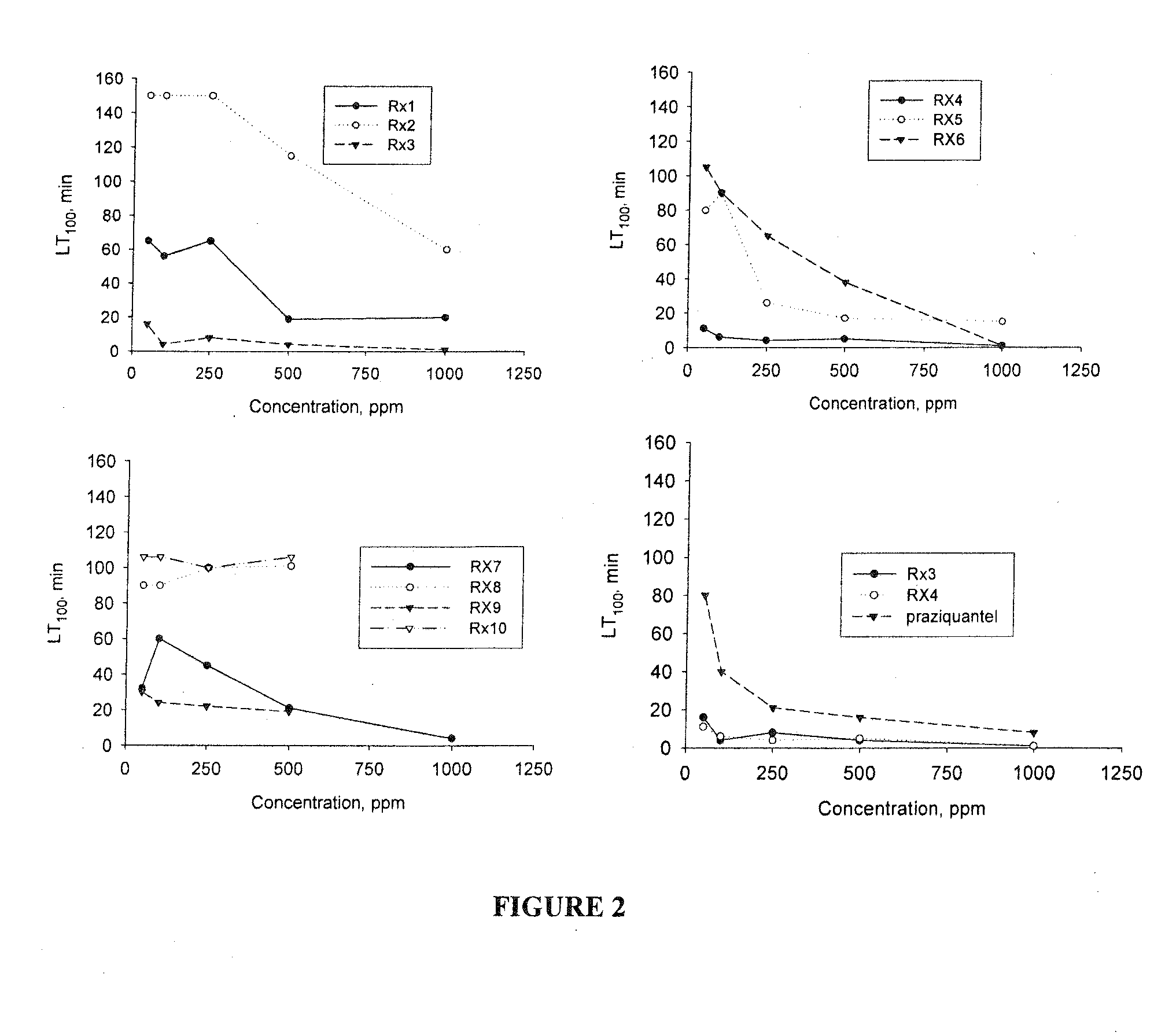Synergistic antiparasitic compositions and screening methods
- Summary
- Abstract
- Description
- Claims
- Application Information
AI Technical Summary
Benefits of technology
Problems solved by technology
Method used
Image
Examples
examples 1-3
[0151]An example of a parasite that commonly infects humans is Hymenolepsis nana, which is an intestinal parasite. H. nana is a difficult worm to eliminate from the human intestine. See John Rim, Treatment of Hymenolepis nana infection. Post-Graduate Doctor Journal. Middle East Edition, 5:330-334, 1985. H. nana is found worldwide and infection can occur in humans of any age; however, due to the increased likelihood of exposure to human feces, small children have the highest risk of contracting hymenolepiasis, the disease associated with H. nana infection.
[0152]H. nana has a characteristic life cycle of about 7 days. When a host has been infected, the H. nana eggs pass into the ileum of the small intestine and hatch into oncospheres, motile larvae of H. nana, which penetrate the lamina propria of the villus of the small intestine. Within about 3 to 4 days, the larvae mature into pre-adult cysticercoids, which then enter the gut lumen, attaching to the mucosa of the villus of the smal...
example 1
[0157]The following compositions were each tested for anti-parasitic effects against H. nana in vivo: Rx1—Black seed cumin oil; Rx2—Lilac flower oil; Rx3—thyme oil (white); Rx4—carvacrol; Rx5—geraniol; Rx6—cineol; and Rx7—wintergreen oil; Rx8—Lilac Flower oil-V3; Rx9—trans-anethole; Rx10—p-cymene; Rx11—thymol.
[0158]Each mouse in the experimental groups was inoculated orally with 400 mg / kg body weight of the specified test compound (Rx) daily for 5 successive days beginning 24 hours following detection of eggs in feces. At the same time, each mouse of the control group was inoculated orally with 400 mg / kg body weight of the suspension material only, i.e. soybean oil, daily for 5 successive days. The egg count of every mouse (experimental and control) was determined daily during the periods of treatment and for further 2 days after the last dose treatment. On the 3rd day after the last dose treatment the cure rate was determined. The criteria for cure was assessed according to: (1) de...
example 2
[0162]The compounds are combined to produce the compositions having anti-parasitic properties disclosed herein. The compositions tested are set forth in Table 2. An “X” in a cell of the table indicates that a particular compound is included in a particular test composition. For example, in the column labeled “S1,” there is an X in the row setting forth thymol. As such, composition “S1” includes Thymol. Composition S1 further includes carvacrol, trans-anethole, and p-cymene.
TABLE 2SIS2S3S4S5S6S7S8S9S10SllS12S13S14S15S16thymolXXXXXXXXthyme oilXXXXXXX(white)linaloolXcarvacrolXXXXXtrans-XXXXXXanetholeα-pineneXp-cymeneXXXblack seedXXXcumin oilLilacXXXflower oilgeraniolXXXXwintergreenXXoilcineolXXlime oilXXXd-limoneneX
[0163]Each mouse in the experimental groups is inoculated orally with 400 mg / kg body weight of the specified test composition daily for 5 successive days. At the same time, each mouse of the control group is inoculated orally with 400 mg / kg body weight daily for 5 successive...
PUM
 Login to View More
Login to View More Abstract
Description
Claims
Application Information
 Login to View More
Login to View More - R&D
- Intellectual Property
- Life Sciences
- Materials
- Tech Scout
- Unparalleled Data Quality
- Higher Quality Content
- 60% Fewer Hallucinations
Browse by: Latest US Patents, China's latest patents, Technical Efficacy Thesaurus, Application Domain, Technology Topic, Popular Technical Reports.
© 2025 PatSnap. All rights reserved.Legal|Privacy policy|Modern Slavery Act Transparency Statement|Sitemap|About US| Contact US: help@patsnap.com



